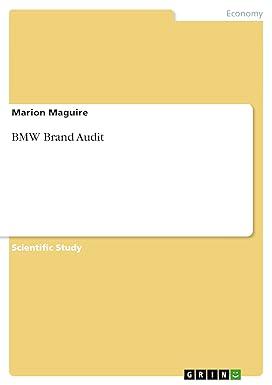Question
Modern Day Gospel Fellowship is a non-denominational charity organisation established in 2001. The charitys aim is to provide support to children from disadvantaged backgrounds. The
Modern Day Gospel Fellowship is a non-denominational charity organisation established in 2001. The charitys aim is to provide support to children from disadvantaged backgrounds. The support comes in two folds i.e. academic such as scholarships and related academic activities and sports such as tennis, swimming and football. The aim is to provide total well-being to humanity. Modern Day Gospel Fellowship has detailed constitution which explains how the charitys income can be spent. The constitution also notes that the administration expenditure cannot exceed 6% of annual income. The charitys income is derived wholly from voluntary donations which includes: Cash collected from public donations by volunteers. Cheques sent to the charitys head office. Donation from generous individuals. Some of these donations have specific clauses attached to them indicating that the initial amount donated (capital) cannot be spent. However, the income (interest) from the donation can only be spent on specific activities, for example, provision of sport equipment and scholarships. The rules regarding the taxation of charities in the country where Modern Day Gospel Fellowship is based are complicated, with only certain expenditure being allowable for taxation purposes and donations of capitals being treated as income in some situations. You are required to: i. Identify areas of inherent risk in Modern Day Gospel Fellowship and explain the effect of each of this risk on the audit approach. 5 marks ii. Explain why the control environment may be weak at Modern Day Gospel Fellowship. 3 marks b) You work in a reputable audit firm and you are currently reviewing the working papers of several audit assignments recently curried out by your audit firm. Each of the audit engagement is nearing completion, but certain matters have recently come to light which may affect your audit opinion on each of the assignments. In each case, the year-end of the company is 30 August 2019. i. Mimie Company (Profit before tax Ghc 750,000) On 6 September 2019 a letter was received informing the company that a customer, who owed the company Ghc 150,000 as at the year-end had been declared bankrupt on 30 August. At the time of the audit it was expected that unsecured creditors, such as Mimie, would receive nothing in respect of this dept. The directors refuse to change the financial statements to provide for the loss, on the grounds that the notification was received by the statement of financial position date. Total debts shown in the statement of financial position amounted to Ghc 2,375,000. 3 marks ii. Kokuvi Company (Profit before tax Ghc 2,500,000) On 20 July 2019 a customer sued the company for personal damages arising from a defect in one of its products. Shortly before the year-end, the company made an out-of-court settlement with the customer of Ghc 50,000, although this agreement is not reflected in the financial statements. Further, the matter subsequently became known to the press and was extensively reported. The companys legal advisers have now been informed that further claims have been received following the publicity, although they are unable to replace a figure on the potential liability arising. The company has referred to the claims in a note to the financial statements stating that no provision has been made because the claims are not expected to be material. 3 marks iii. Baaba Na Company (profit before tax Ghc 1,250,000) The audit work revealed that a trade investment stated in the statement of financial position at Ghc 2,500,000 has suffered a permanent fall in value of Ghc 1,500,000. The company has refused to put an impairment charge through for it on the grounds that other investments (not held for resale) have risen in value and are stated at amount considerably below their realisable values. 3 marks iv. Achah Martin (profit before tax Ghc 500,000)This client is a furniture company, currently manufacturing for the local market using local materials and some of its own workforce. The labour cost has been included in the cost of a non-current asset in the statement of financial position at a value of Ghc 50,000. During the audit it was discovered that the direct labour cost records for the early parts of the year have been accidently destroyed. 3 marks You are required to: Discuss each of the cases outlined above, referring to materiality considerations and, where appropriate, relevant accounting principles and appropriate accounting standards, explaining the audit reporting implications in each case
Step by Step Solution
There are 3 Steps involved in it
Step: 1

Get Instant Access to Expert-Tailored Solutions
See step-by-step solutions with expert insights and AI powered tools for academic success
Step: 2

Step: 3

Ace Your Homework with AI
Get the answers you need in no time with our AI-driven, step-by-step assistance
Get Started


